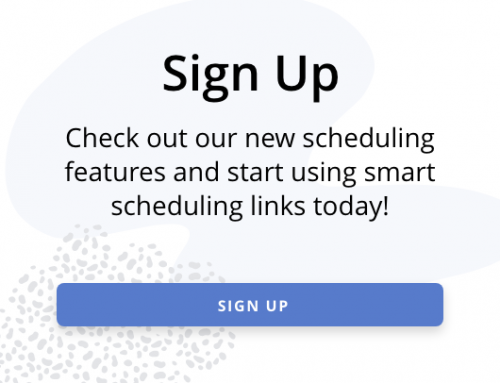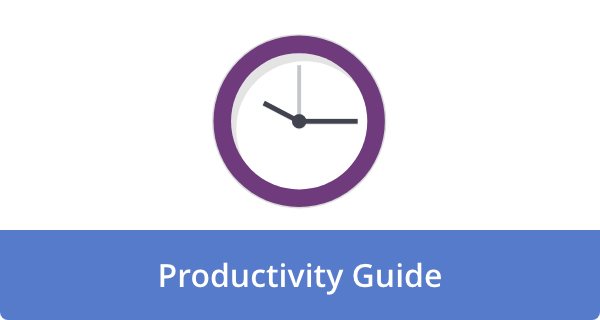

Workplace stress is hardly an individual problem. It can, all too easily, uproot the very fabric of your team as you know it. When stress levels are high, deadlines are missed, miscommunication increases, and creativity is compromised.
However, when leaders take active, intentional steps to create a lower-stress environment, they can set their teams up to operate more smoothly, which ultimately benefits performance and employee morale.
Stress is inevitable in any workplace, but needlessly excessive stress? That’s preventable. Research from a multitude of sources (which we’ll discuss briefly) indicates that reducing stress at work yields tangible benefits—higher efficiency and overall job satisfaction.
Let’s begin with the eight reasons why reducing workplace stress directly boosts team performance (and how companies like yours can do it, too).
1. Less Stress Means More Productivity
We all know stress kills productivity. When employees feel overwhelmed, their ability to focus tanks and work slows down, and errors increase. The American Institute of Stress notes that stress-related distractions cost businesses an estimated $300 billion per year in lost productivity.
Yikes.
On the flip side, when workplaces prioritize stress reduction—through reasonable workloads, clear communication, and structured breaks productivity increases. A Harvard Business Review study found that employees in high-trust, low-stress workplaces were 50% more productive than those in high-stress environments.
The key takeaway from this is that reducing stress enables people to accomplish more in less time, with fewer mistakes.
2. Stress-Free Teams Communicate Better
Ever tried to have a productive conversation with someone who’s completely overwhelmed? Stress makes communication choppy, rushed, and often unclear. When employees are under pressure, they’re more likely to misinterpret messages, react emotionally, or avoid difficult conversations altogether.
Teams with lower stress communicate more openly and effectively. A relaxed work environment means employees can ask questions and provide feedback without fear of ramifications. Companies that cultivate an open communication culture reap significant benefits—according to a McKinsey study, teams that communicate effectively are 20-25% more productive.
And let’s not forget the role of scheduling tools. Many platforms, including Calendar, Microsoft Calendar, and Google Calendar, help teams stay organized and aligned, reducing the stress of last-minute meetings or missed deadlines. (Because, let’s be real, no one likes the surprise “urgent” meeting that could have been an email.)3. Less Stress Means More Employee Morale and Engagement
A stressed team isn’t a happy team. When employees are burnt out, enthusiasm for work disappears. When stress is managed well, morale improves, and employees become more engaged in their work.
According to Gallup, highly engaged teams exhibit 23% higher profitability and significantly lower turnover. That’s because engagement and stress are inversely related—the lower the stress, the higher the motivation.
Companies that invest in employee well-being, whether through flexible work hours, wellness programs, or mental health resources, often experience a significant increase in employee engagement. A workforce that feels valued is all the more likely to be committed and proactive.
4. A Calmer Environment Fosters Creativity
Creativity thrives in relaxed environments. When employees feel constantly under pressure, their ability to think outside the box disappears. Studies show that chronic stress literally shrinks the prefrontal cortex—the part of the brain responsible for problem-solving and creative thinking.
Companies that prioritize mental well-being often see an increase in creative output. When employees aren’t in survival mode, they have the mental space to brainstorm, innovate, and develop new solutions.
Some of the most successful companies—Google and LinkedIn—actively promote stress-free environments by encouraging breaks, allowing flexible schedules, and open collaboration. The result? A workforce full of new ideas and innovative approaches.
5. Less Stress Means Fewer Sick Days
Stress isn’t just mentally draining—it’s physically depleting, too. Research by ScienceDirect indicates that 75% of doctor visits are stress-related, resulting in increased absenteeism.
When employees are constantly stressed, their immune systems weaken, making them more susceptible to illness. High stress also contributes to chronic conditions like heart disease, anxiety disorders, and burnout—problems that don’t just affect the individual but the entire team dynamic.
Workplace stress has a direct impact on absenteeism rates, making it a costly issue for businesses. Companies that prioritize stress reduction have a healthier workforce, fewer unexpected absences, and a more reliable team. With fewer employees calling out, coworkers aren’t left scrambling to cover extra tasks at the last minute (and let’s be real, no one enjoys that). A stable, well-supported team operates more efficiently and experiences less disruption.
6. Stress Reduction Means Better Decision Making
Have you ever made a bad decision while stressed out? You’re not alone. Stress floods the brain with cortisol, impairs rational thinking, and leads to impulsive (or downright terrible) choices.
High-stress levels significantly impair decision-making abilities. That’s a big deal when you factor in how many daily decisions teams have to make—about strategy, deadlines, and collaboration.
When stress is reduced in the workplace, companies help employees make clearer, more thoughtful decisions. This results in fewer errors, improved risk assessment, and more innovative business decisions overall. (Because let’s be real—no one wants to be the person who greenlights a doomed project due to stress-induced tunnel vision.)
7. Less Stress Means Better Work-Life Balance
Work-life balance is a fundamental factor in long-term employee satisfaction and retention. When work stress spills into personal time, burnout is inevitable.
A recent Deloitte study found that 77% of employees have experienced burnout at some point in their careers, with many citing poor work-life balance as the primary cause. Companies that actively reduce stress—by offering remote work, respecting off hours, and ensuring reasonable workloads—see much lower turnover rates.
When employees feel they can step away from work without guilt, they return more focused, energized, and ready to contribute. It’s a win-win for both the individual and the company.
8. Less Stress Means Better Teamwork
Collaboration falls apart when stress takes over. Overloaded employees are more likely to snap at each other, misinterpret messages, or just avoid working together altogether. Instead of tackling problems as a team, people become defensive, frustrated, or checked out—none of which helps get things done.
A calmer work environment facilitates teamwork. When employees aren’t weighed down by stress, they communicate more openly, support one another, and genuinely enjoy working together. Research from the American Psychological Association found that teams with lower stress levels reported 40% stronger workplace relationships, which naturally leads to better collaboration.
Creating a low-stress culture where people feel safe speaking up and asking for help makes all the difference. When teams trust each other and don’t feel like they’re constantly drowning in pressure, projects move faster, mistakes happen less often, and work becomes a whole lot more enjoyable.
How Will You Create a Low-Stress, High-Performance Workplace?
How can companies reduce stress while enhancing team performance? Here are a few strategies:
- Encourage breaks and downtime. Taking short mental breaks throughout the day can improve focus and prevent burnout.
- Motivate open communication. Teams that feel safe expressing concerns work more cohesively.
- Use scheduling tools wisely. Platforms like Calendar help teams streamline workflows, reducing the stress of mismanaged meetings.
- Promote flexibility. When employees have more autonomy over their schedules, stress levels drop, and productivity rises.
Reducing stress isn’t about eliminating all challenges—it’s about creating an environment where employees can tackle those challenges effectively without feeling overwhelmed. When businesses strike this balance, they inevitably create a high-performing and resilient workforce.
Featured Image Credit: Photo by Yan Krukau: Pexels











Howie Jones
My name is Howie and I'm a Customer Success Manager at Calendar. I like to ensure our customers get the best experience using our product. If you have questions email me howie at calendar.com